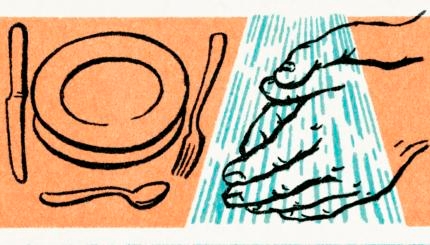A Chevra Kadisha (literally, “holy society”) is a group dedicated to ritually preparing bodies for interment and comforting mourners through Jewish rituals. A Chevra Kadisha embodies the values of compassion, dignity and communal support, and creating one in your community can bring these values to life in meaningful ways.
There’s no right way to get started doing this work, and part of the beauty lies in the diversity of approaches Jewish communities have developed to it over time. However you approach it, this guide will walk you through the steps to establish a Chevra Kadisha that reflects the needs and values of your community.
Define Your Purpose and Vision
Starting a Chevra Kadisha begins with understanding your community’s needs and your vision. Ask yourself:
- What inspires you to create this Chevra Kadisha?
- Who are the people you hope to serve?
- How do you envision embodying Jewish values of chesed (kindness), kavod (respect) and community care?
This purpose might include traditional Jewish practices like taharah (ritual washing of bodies) and shmirah (guarding the deceased), or it may also involve broader support for families, spiritual accompaniment and community education. Taking time to clarify your purpose will help guide every step that follows.
With your help, My Jewish Learning can provide endless opportunities for learning, connection and discovery.
Community Mapping
Think about the resources that currently exist in your community. Reach out to trusted mentors who can offer insight, such as clergy, synagogue board members, or other community leaders. These conversations can help you identify allies who might support your efforts, as well as any concerns that could be addressed through education. By listening and connecting with others, you’ll ensure you are building a Chevra Kadisha that respects and aligns with the needs of your community.
Build Your Team
A Chevra Kadisha is, at its heart, a group of people with a shared dedication to sacred work. Invite those in your community who feel connected to this mission. The team may start small, but each person’s dedication matters. Members don’t need any specific training at the beginning, only an open heart and a willingness to learn.
To broaden your reach, consider reaching out to nearby synagogues, community centers, or other organizations that support end-of-life care. You may find that others in your area share your vision and are eager to help create a Chevra Kadisha that serves everyone in the community.
Learn and Train Together
Training is an essential part of forming a Chevra Kadisha, and the resources you need are available. Each Chevra Kadisha may have different customs, influenced by local tradition, rabbinic guidance and individual preferences. Training can help unify your group, ensure respect for tradition, and foster a sense of confidence in the work you’ll be doing. Whether you’re starting with a few informal sessions or a comprehensive training program, this step is crucial in building your community’s foundation.
There are several options for training. Groups can learn within their own community by engaging those with experience. Reach out to other local Chevra Kadishas to see if they can provide training, or connect with organizations like Kavod v’Nichum or NASCK, which offer structured programs and workshops. No matter which path you choose, training is a valuable way to ensure your Chevra Kadisha feels prepared and supported in this sacred work.
Develop Rituals and Practices That Reflect Your Community
Each Chevra Kadisha has unique practices that reflect its community’s values and customs. This is to be expected, as much of the liturgy and practices around death are determined by customs and habits that have evolved over time, with very little explicit Jewish law, or halakhah, dictating these rituals. Some questions to consider are:
- How traditional would you like your practices to be? There are many Jewish laws pertaining to handling of death and burial, but not all burial societies adhere to the strict letter of the law. Will your Chevra Kadish perform shmirah and taharah for those who opt for cremation? Will your Chevra Kadisha prepare a deceased for burial in street clothes or only in traditional burial garments? These and many other issues are sure to arise and it’s helpful to establish a guiding framework for how they’ll be addressed.
- Will your Chevra Kadish incorporate specific prayers, meditations, or music? Is there existing liturgy that speaks to your group or will you create your own?
- How will you welcome, orient and follow up with new members? What will someone’s first taharah look and feel like? What information will be shared in advance? Will your Chevra Kadisha have an intentional way of exiting a taharah together? Will someone reach out to new people after their first taharah?
It’s fine to start with a simple approach and let the practices evolve over time. You can build upon the basics as your community’s needs become clearer.
Find Community and Mentorship
Many Chevra Kadisha leaders find value in connecting with other groups and learning from their experiences. Kavod v’Nichum can connect you with other Chevra Kadisha leaders who have walked this path and can offer encouragement, guidance and ideas. You’re not alone in this journey, and reaching out can be a beautiful way to build your Chevra Kadisha’s resilience and resources. Joining a national or local network of Cheva Kadisha volunteers also provides a sense of shared purpose and a way to acknowledge the meaningful work you’re doing. These connections can become invaluable sources of learning, support and camaraderie.
Focus on Community Education and Engagement
For your Chevra Kadisha to thrive, educating the community about its purpose is key. Hold informational sessions, share stories about the meaning and beauty of this work, and invite community members to learn more. Consider creating resources to explain what a Chevra Kadisha does and why it matters.
If your Chevra Kadisha is community-based rather than tied to a specific synagogue, think about which organizations and community groups might be enthusiastic about sharing your services with those in need. Partnering with hospice providers, end-of-life doulas, or healthcare facilities can help spread awareness and connect you with those who would benefit from your work.
Community education also helps normalize conversations about end-of-life care, strengthens support for your Chevra Kadisha, and may inspire others to join or volunteer. It also affirms that your Chevra Kadisha is not only about the end of life, but is a source of comfort, respect and connection for the whole community.
Reflect on Your Work
Finally, take time to reflect on the incredible contribution your Chevra Kadisha is making. This work is about creating a culture of care, one that holds people through life’s most fragile moments. Marking milestones — each taharah, each new volunteer, each year together — whether through existing tradition or by creating new ones, is an important piece of the journey. Remember that what you build is more than a service; it’s a sacred community bound by compassion and love.
Looking for a way to say Mourner’s Kaddish in a minyan? My Jewish Learning’s daily online minyan gives mourners and others an opportunity to say Kaddish in community and learn from leading rabbis.



